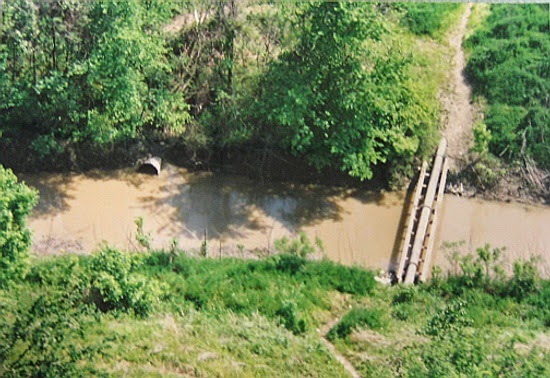Bullying Expert Addresses Challenges, Best Practices for Autistic Students
The international bestselling author discusses the dynamics of student harassment, with an emphasis on children with autism spectrum disorders.
By: James Swift
UncommonJournalism@gmail.com
@UNJournalism
After becoming a university instructor, she has published numerous parenting books, including “Parenting Through Crisis,” “The Bully, the Bullied and the Bystander,” and “Just Because It’s Not Wrong Doesn’t Make It Right.” Her body of her work has been featured in publications like Time and Newsweek, and she has made media appearances on CNN, CBS and The Oprah Winfrey Show.
Early in her work, Coloroso observed discrepancies between “traditional” bullies and what she calls “bullying bullies” -- individuals that, as a result of harassment, tend to lash out at others.
“I began to notice a difference between the classic kid who has utter contempt for other human beings for whatever reason, and then the kid who was targeted by others,” she said. Noticing this, Coloroso soon began examining the issue of adolescent and teen bullying more in-depth.
One of the major difficulties Coloroso notes is a failure among educators to distinguish between what she considers “normal, masculine and necessary conflict” and bullying.
“Bullying is about utter contempt for someone,” she explained. “It’s about making them into an ‘it’…it is to dehumanize them.”
As some young people with autism spectrum disorders (ASDs) may display atypical behaviors, such as unusual tics and mannerisms, Coloroso believes they may be at a heightened risk for peer harassment. Additionally, she said some ASD students may not have the ability to properly “read” their peers and see past their ill intentions.
“Bullying is about getting pleasure from someone else’s pain,” she said. Coloroso brings up the story of Phoebe Prince, a 15-year-old Irish transplant who committed suicide in Massachusetts in 2010. “She was relentlessly targeted by some high-status social bullies,” she said. “And high-status social bullies can get away with a lot.”
Regarding students on the spectrum, Coloroso said that, frequently, their bullying claims are dismissed as simple conflicts. And while school administrators and peers may be extremely sympathetic towards students with severe mental retardation or Down syndrome, she believes children with ASDs may not receive the same levels of empathy.
“Often, you will find in school that they have tremendous empathy for kids who have a physical disability or a kid who has a mental disability,” she said, “than a kid who is very bright and has ‘weird behavior.’”
Breaking the Bully Cycle
“Bullying can be a one-time event,” Coloroso stated. “It can also be, as it usually is, continuous or repeated -- it can be hazing, or it can be cyber-bullying.” To combat in-school harassment, Coloroso said anti-bullying policies are just a small piece of the puzzle; additionally, she believes programs must be in place that help kids better empathize with their peers. To break the cycle of bullying in schools, Coloroso said that students have to accept their own interdependence and interrelatedness as a group, while simultaneously recognizing one another’s uniqueness as individuals.
“I tell students you don’t have to like every kid in your class, but you must honor their humanity,” she said. “So if one kid is willing to stand up, who is of the same status as the bully or higher, that has tremendous power.”
The repeated abuse and bullying of some students, Coloroso said, may place certain individuals outside the general student body’s “circle of caring.” As many students with ASDs may maintain “lower” status positions than their peers, Coloroso said it’s not exactly surprising that so many children with Asperger’s or autism become the butt of cruel jokes and physical attacks. However, she believes drawing ASD students into extracurricular activities that cater to their interests -- such as computer programming or acting -- may allow them to better grasp and develop their own personal strong suits, while simultaneously helping them forge connections with others.
In addition to the eponymous bullies, bullied and bystanders examined in Coloroso’s work, she observes a fourth kind of school inhabitant -- a “witness, resister and defender,” as she describes them. “So if a high-status social bully is targeting a kid with special needs, that’s on the autism spectrum,“ she said, “if there is someone else in that chess club, if there is someone else in that drama class, if there is someone else who is high status in the lunchroom, willing to stand up for that kid with Asperger’s...it can make a huge difference, more so than if an adult stood up to them.”
What Can Parents Do?
The first thing parents of children with autism spectrum disorders should do if their sons or daughters say they are being bullied, Coloroso said, is to assure them that their complaints and cries are being heard.
“You have to say to your kid, I hear you,” she stated. “I believe you, you’re not in this alone.”
As some students may have their bullying complaints written off as teasing, Coloroso said that it was especially important for moms and dads to convey to their children that their allegations are taken seriously. “What parents don’t want to do,” she said, “is minimize, rationalize or explain it away.”
However, she also said parents should not rush into conflicts with the accused bullies or their parents, as this could potentially disempower their own children even more. “Don’t tell the targeted kid to fight back,” she said. “It’s not a fight…bullies are cowards, [but] they're not ignorant; they picked on a kid they knew they could get.” Similarly, Coloroso does not approve of parents telling their children to simply avoid harassers. “Now that’s what you want to say, just stay away from them,” Coloroso said. “Well, they will find the kid.”
One of the strongest defenses against school bullying, she said, was peer socialization -- especially in the often tumultuous middle and high school transitional periods. “Make sure there is a buddy in that school, that is of high status to them, that is willing to stand up to the bullies,” she said. “Having a kid just a grade above them or two grades above them can help out.”
Since bullying targets may be socially isolated, Coloroso said it was important for parents to let their children know that there are measures they can take to ensure their own safety. She encourages parents to locate personnel within the school to serve as possible “advocates” for the children. “Find somebody in that school that’s a safe harbor for them,” she advised.
Lastly, Coloroso said it is important for parents to let their children know that neither they are their disorders are responsible for the individual acts perpetrated by bullies.
“You do have Asperger’s, and you do have mannerisms that are different,” Coloroso stated, “but it’s not your fault somebody dunked your head in a toilet.”
Uncommon Journalism, 2014.




Comments
Post a Comment